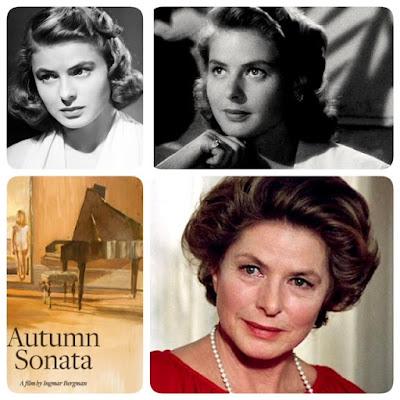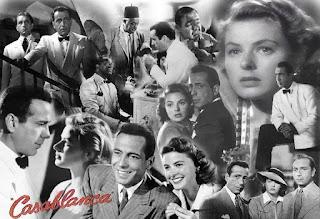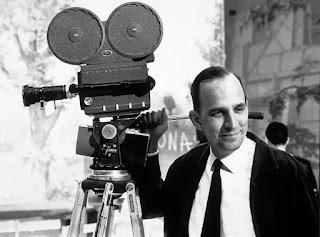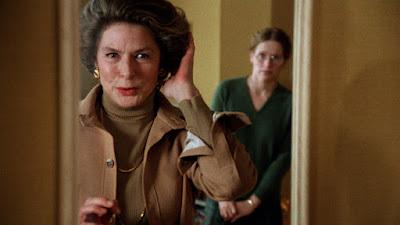 One of the most beloved of Hollywood’s Golden Age stars,
Ingrid Bergman lit up screens large and small in an acting career that spanned
50 years, included 54 onscreen performances and brought three Oscars and two
Emmys among her many awards and accolades. On the American Film Institute’s
most recent list of Great Screen Legends, Bergman ranks #4 among actresses.
One of the most beloved of Hollywood’s Golden Age stars,
Ingrid Bergman lit up screens large and small in an acting career that spanned
50 years, included 54 onscreen performances and brought three Oscars and two
Emmys among her many awards and accolades. On the American Film Institute’s
most recent list of Great Screen Legends, Bergman ranks #4 among actresses.
~
When she was taken to her first play as a child in Sweden, young Ingrid had blurted out, “That’s what I’m going to do!” during the performance. In that moment she’d become utterly stagestruck. Strong-willed and ambitious, she held fast to her dream and when she was accepted into Stockholm’s Royal Dramatic Theatre School at 18, she’d already appeared in her first film.
In 1939, producer David O. Selznick signed Bergman to an exclusive contract and brought her to the US. He would recall being dazzled by what he called her “combination of exciting beauty and fresh purity” when he saw her in the Swedish version of Intermezzo (1936). Launching her American film career, Selznick focused on her unaffected elegance and inherent beauty and made of her what he called “Hollywood’s first natural actress.” In Sweden Bergman had learned to underplay emotion and to know her lines perfectly; her luminous beauty was her own and her enormous on-camera charisma was a gift very few possess.

Off-screen, Ingrid Bergman had developed a
compartmentalized life. In one sector was her home life with her husband, Petter Lindstrom, a brain surgeon, and
their daughter, Pia. For the busy actress home would become a stopover between film
assignments. From the start, Bergman had been dedicated to her craft. She reveled in
acting and loved making movies. It wasn’t that her family didn’t matter to
her, but acting was her passion and she was extremely focused on a career that frequently kept her away from home. The sector of her life that encompassed movies and
celebrity was a realm where she lived as woman of the world, a formidable
star who could do as she pleased.
It was no great secret in Hollywood that Bergman had a habit of falling into
affairs with certain of her co-stars and directors, and while this lifestyle was nothing new to Hollywood, it stood in polar
opposition to Ingrid’s universally admired and near-saintly public image.
Then…

Literally banished from Hollywood and scorned around the
world, Bergman lived “in exile” in Italy for many years, making films only for
Rossellini, marrying him and starting a second family. Petter had physical custody of Pia, with Ingrid allowed to see her
in the US for half of her school vacation time. Visits outside the country would
require a court order and this proved problematic. As things turned out, mother and daughter saw almost
nothing of each other for years, with sporadic contact in between. Over time Ingrid came to believe that Pia thought her mother’s career was more
important to her than she was.
~
It took some years but Bergman would regain her reputation and stature. Her marriage to Rossellini wouldn’t survive, but her acting career would again thrive and she would earn two
more Academy Awards. She would also reconnect and develop a relationship with her daughter, Pia, who became a TV journalist.

Ingmar Bergman
When the two Bergmans first discussed collaborating, Ingrid had been thrilled, and letters flew back and forth between the two for a time, but nothing happened. Then, in 1973
at the Cannes festival, Ingrid tucked a note she’d scrawled on his last letter into
Ingmar’s pocket. This gesture would lead to the making of Autumn Sonata in
1978.
The role Ingmar would craft for Ingrid was that of a world-famous concert pianist, a self-absorbed artist in her late years who is still performing. Divorced from their father, she has lived at a distance from her two daughters and, in fact, hasn’t seen either for many years. Liv Ullmann portrays the older daughter, married to a clergyman and personally caring for her younger, profoundly handicapped sister (Lena Nyman) in her own home. The story opens as the mother is invited for a visit and comes expecting a respite. Soon enough she finds herself in a punishing late night face-off with her angry, aggrieved oldest child. The daughter’s simmering resentment has come roiling to the surface and will not be set aside on this night. Bergman and Ullmann are superbly matched in showcase performances as a mother and daughter grappling desperately with their frayed bond.
The production had gotten off to a rough start. Ingrid, who would admit to her tendency to be demanding at the beginning of a shoot, wrangled with Ingmar over the script, certain plot points, her character and, most of all, her preparation for her role. Ingmar discovered that Ingrid had planned out her entire performance in advance and in detail. He wouldn’t accept this, insisting on the more immediate and truthful approach he routinely got from his repertory actors. This was something Ingrid was not used to nor comfortable with. He saw that she resisted going beyond a certain point emotionally and worked closely with her to push past that boundary. He guided her, sometimes gently, sometimes harshly, through what she would call the most challenging film performance of her career.

Ingrid Bergman and Liv Ullmann in Autumn Sonata
Autumn Sonata is an unrelenting close-up of a blistering mother/daughter confrontation. For the viewer, sitting front row center in this conflict, it can be draining. Film critic Richard Corliss mused that viewers who are up for the experience "may leave the film muttering a wrung-out "Whew!" followed quickly by an appreciative "Wow!"" Another critic called it "exquisitely tedious." Autumn Sonata may be a film that viewers love or hate, but few, if any, will have anything but praise for the performances of Ingrid Bergman and Liv Ullmann.
Though some thought Ingmar Bergman had used aspects of Ingrid’s personal life as a basis for the story, he would deny this. Ingrid would later acknowledge with some irony that at the time "all" her friends were saying, “I hear you’re playing yourself...” Interestingly, one of the plot points about which she argued with him most was the length of her character’s absence from her daughters’ lives. She didn’t think it was believable or even possible. But Ingmar would not waver, insisting there were women who “blocked everything else out” in favor of their own lives and careers.
Toward the end of her life Ingrid Bergman cited Intermezzo, the 1936 Swedish film that brought her to Hollywood, Casablanca, the film that made her a star, and Autumn Sonata as her three pivotal films. With the last, her final feature, Bergman felt her film career had been "rounded out" and was satisfied that it provided her finale. Autumn Sonata would also bring one final Oscar nomination for the legendary actress.
Ingrid Bergman's very last onscreen role was on the small screen, the TV movie A Woman Called Golda (1982). She was awarded a posthumous Emmy Award for her performance.

Notes
Ingrid Bergman: My Story by Ingrid Bergman and Alan Burgess, Delacorte Press, 1980
As Time Goes By: The Life of Ingrid Bergman by Laurence Leamer, Harper & Row, 1986
For links to all posts in the CMBA's "Screen Debuts & Last Hurrahs" blogathon, click here.

